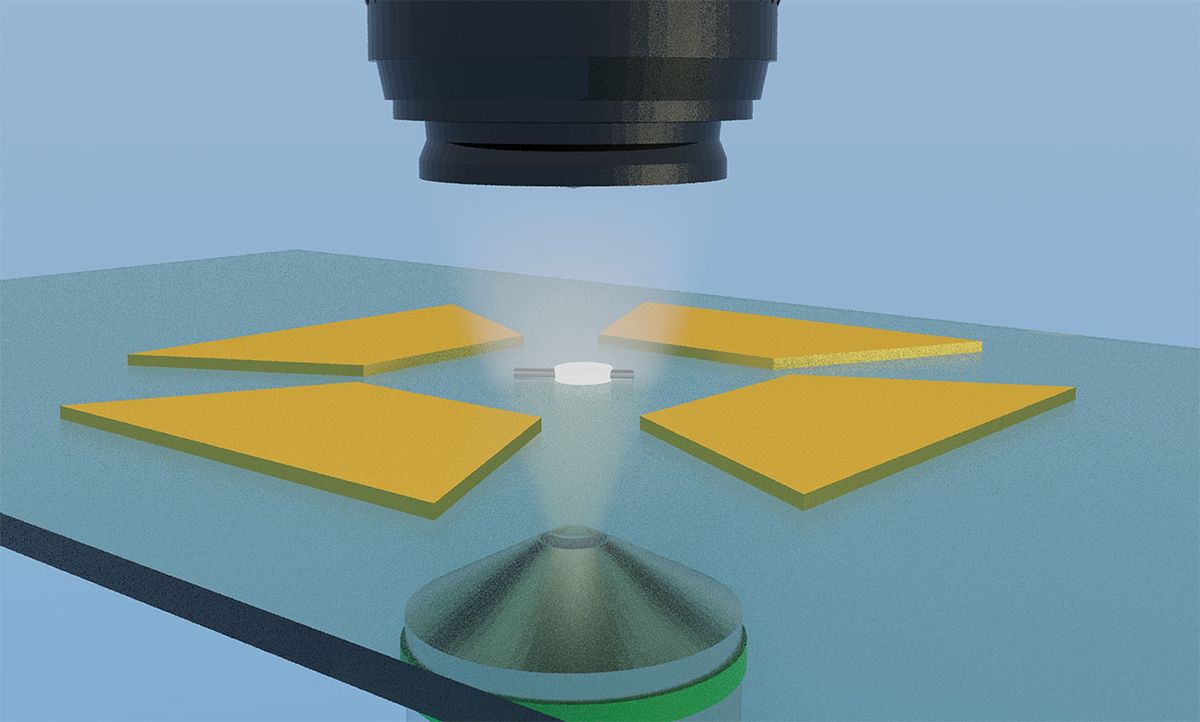If nanotechnology has one clear image in the collective pop-culture consciousness, it is that of nanorobots, nanoscale machines capable of performing mechanical functions. When considering the potential of such a technology, the more astute may ask themselves: How would you manage to direct the movements of these nanorobots?
Researchers at the University of Texas at Austin have discovered a physical phenomenon in the way that semiconductor nanoparticles interact with light when under the influence of an electric field that may answer that question.
In research described in the journal Science Advances, the University of Texas scientists discovered that the strong interactions of light, semiconductor nanoparticles, and electric fields lead to the efficient reconfigurable operation of semiconductor nanomotors, or nanodevices.
Using only optical microscopy, the researchers could distinguish between semiconductor silicon and gold nanoparticles by observing their mechanical responses to light. This method is contactless and cheap compared with traditional measurement techniques.

In addition, the researchers believe that this combination light/electric field effect could be used to reconfigure micro- or nanomechanical switches or antennas, or be coupled with micromachines for electronic and biomedical applications.
“I consider the discovered effect a mechanical analogy of the field-effect transistors [FETs], the building blocks of CPUs that have revolutionized society,” said Donglei Fan, associate professor at the University of Texas and coauthor of the research. “A FET switches on and off in response to an externally applied voltage. Our device switches among multiple mechanical rotation modes in response to light intensity, which is instant and can be repeated many times.”
To describe how the effect works, Fan explained that when light hits a semiconductor nanowire, it frees electrons and changes the electric conductivity of the nanowire and its polarization. When the nanowire is placed in an external electric field to drive its mechanical rotation, the driving torque is changed because of the light.
There are a number of applications that Fan and her colleagues believe the technology could be applied to. For instance, in optical sensing under the right conditions, it could become possible to correlate directly the mechanical motions with light intensity.
Fan also suggests it could be used in drug delivery. “Back in 2015, we discovered that mechanical rotation of drug carriers can change the molecule release rate,” she said. “Now, when light can change the rotation speed, one can change the molecule release rate.”
Fan acknowledges that to fully explore the applications in optical sensors or communication, it will be necessary to explore both top-down lithography and bottom-up assembling. Biosensors could be obtained by both approaches, according to Fan.
In all cases, Fan sees this technology enabling static devices to be dynamic and reconfigurable with simple control of light exposure, which is a step toward intelligent electronics and biomedical devices.
She added: “I personally believe this work can lead to a focused field. There are many projects we can do.”
Dexter Johnson is a contributing editor at IEEE Spectrum, with a focus on nanotechnology.



